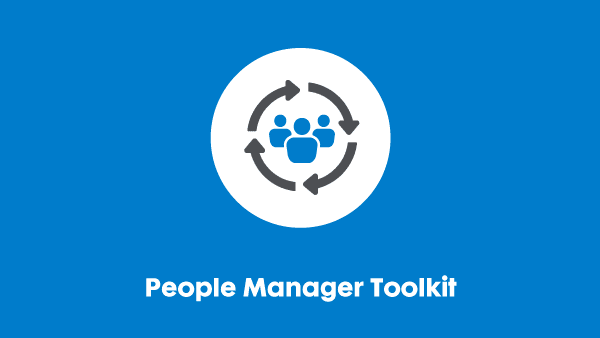- Executive summary
- Key statistics
- Look beyond 'disabled' staff
- The most common types of adjustments
- Managers need more knowledge and confidence about the workplace adjustments process
- Employee confidence in the process
- Waiting times are long and reviews are infrequent
- When adjustments are in place, it helps employees keep their job and remain productive
- Little impact on career development and progression
- Mixed feelings about the priority of workplace adjustments at board level
Last updated: 23 September 2024
The Great Big Workplace Adjustments Survey – Executive summary
For the full report see here. Read the Executive Summary below.
A research project undertaken by Business Disability Forum June 2020.
Sponsored by Microlink

Executive summary
This research report explores the feedback from over 1,200 respondents taking part in Business Disability Forum’s survey in 2019 about their experience of workplace adjustments in their organisations. It draws together the evidence of how effective the provision is and perceptions of both employers and employees about how the adjustments provided work and opportunities for employees with disabilities and long-term conditions. At the end of each section, we offer key topics for organisations to consider about their own internal workplace adjustments experience and processes.
The main themes developing from the survey are summarised below.
Key statistics
- 80 per cent employees said their adjustments have helped them stay in their job and help them be more productive.
- 60 per cent enjoyed their job more since having adjustment in place.
- 60 per cent of employees with adjustments do not have all the adjustments they need.
- 34 per cent of employees have not asked for adjustment because they fear their manager would treat them differently.
- Only 30 per cent of employees were confident their employer would make adjustments for them if they were needed in the future.
- 25 per cent employees waited over a year to get their adjustments in place.
- Only 24 per cent employees with adjustments regularly speak to their manager (or equivalent) about how well their adjustments are working.
- Only 19 per cent employees said adjustments remove all barriers they experience in the workplace.
Look beyond ‘disabled’ staff
The findings highlight employees’ need for adjustments.
- 42 per cent of respondents with adjustments had acquired a disability or condition whilst working for their current organisation.
- Of respondents with disabilities or conditions working with adjustments in place at the time of the survey, 52 per cent said they had either requested additional or alternative adjustments or had considered them but decided not to request them. Six in ten recorded further types of adjustments they felt they still needed.
- Of respondents with disabilities or conditions working without adjustments in place, 60 per cent said they had either requested or had considered requesting them.
The most common types of adjustments
The most common adjustments provided needed a degree of flexibility from the organisation but very often required minimal budget. These adjustments include ergonomic equipment, flexible working, or adjusted hours, working from home and time off to attend appointments or therapies to help manage a condition.

Employees often find the conversation about adjustments sensitive and fearful
Organisations need to be aware that employees find the conversation about adjustments sensitive and, in many cases, even amongst those with adjustments already in place, many avoid them for fear of stigma.
- 28 per cent of those with adjustments and 34 per cent of those without adjustments said they did not make requests because they were worried their employer might treat them differently to how they did before they requested an adjustment.
- 28 per cent of those with adjustments and 43 per cent of those without adjustments said they did not make requests because they did not want to approach their employer.
- 23 per cent of those with adjustments and 31 per cent of those without adjustments said they did not make requests because they were worried other colleagues would treat them differently to how they did before they requested and adjustment.
Managers need more knowledge and confidence about the workplace adjustments process
It is critical that, as a first contact for most employees, managers in the workplace are knowledgeable about the process and well equipped to handle discussions about adjustments. There is evidence in the data that managers are not always as effective or confident as they should be.
- Almost one in ten respondents with adjustments in place cited difficulties in the process due to their manager showing a lack of support, help or understanding or being resistant to the flexibility needed to implement and manage adjustments.
- While a majority of managers were confident to some extent in a number of aspects of managing adjustments (for example, knowing where to get information about the process, knowledge of the process, managing the wider team’s attitudes about adjustments, and understanding what adjustments can be made) only a minority – approximately a third for each attribute – described themselves as ‘very confident’, which leaves much room for improvement.
Employee confidence in the process
Employers should not assume that employees are fully confident in the implementation of the workplace adjustments process, even if they have had adjustments in the past.
- A fifth of employees with adjustments in place who decided not to request additional or alternative arrangements thought their employer would not make the right adjustments.
- 30 per cent employees thought any adjustments they might need in future would definitely be put in place for them (49 per cent said ‘maybe’ and 12 per cent were not confident at all).
Waiting times are long and reviews are infrequent
Experience of the process was varied among respondents and the findings suggests that the waiting times for adjustments was, in some cases, too long. Review meetings to ensure adjustments were working and are effective were also happening too infrequently.
- Almost a third (32 per cent) generally experienced a relatively quick process of getting their adjustments in place of under one month. However, at the other end of the spectrum almost a fifth (17 per cent) had waited for over a year (8 per cent were waiting for two or more years).
- Approximately a quarter (24 per cent) spoke to their main contact (someone in a disability support team or a line manager, for example) about their adjustments weekly or monthly. However, at the other end of the spectrum, almost one in ten (9 per cent) stated once a year and another fifth (21 per cent) less often. Indeed, 15 per cent said they never spoke to their main contact about their adjustments.
When adjustments are in place, it helps employees keep their job and remain productive
Most employees felt their adjustments had a positive impact for them in the workplace:
- 19 per cent of respondents felt that their adjustments had successfully tackled all barriers and difficulties and another three quarters (73 per cent) said they had tackled some of them.
- 80 per cent agreed that adjustments helped them stay in their job, made them more productive and/or were happy with the adjustments that they had in place.
- More than 60 per cent enjoyed their job more due to their adjustments.
Managers also agreed that employees in their teams who have adjustments in place generally were happier and more productive employees with their adjustments in place.
Little impact on career development and progression
Although respondents and their managers agreed adjustments had a good impact on job retention, productivity and job satisfaction, the workplace adjustments had less of an impact on employee’s career progression beyond their current role.
Managers were more likely than employees to agree that adjustments could be kept if employees moved to a different role in the organisation (75 per cent agreeing to some extent compared to 53 per cent of individuals with adjustments in place) and also that adjustments helped progress careers (53 per cent compared to 29 per cent given by employees with adjustments). This shows clear differences in perception between employees and managers on how employees with adjustments would be supported to develop or progress their career in the organisation.
Mixed feelings about the priority of workplace adjustments at board level
Organisations should ensure that adjustments and support for staff with disabilities and long-term conditions is a priority at board level. Just one third of managers with experience of managing people with disabilities agreed strongly that this was the case in their own organisations.
If you require this content in a different format, contact enquiries@businessdisabilityforum.org.uk.
© This resource and the information contained therein are subject to copyright and remain the property of the Business Disability Forum. They are for reference only and must not be copied or distributed without prior permission.
